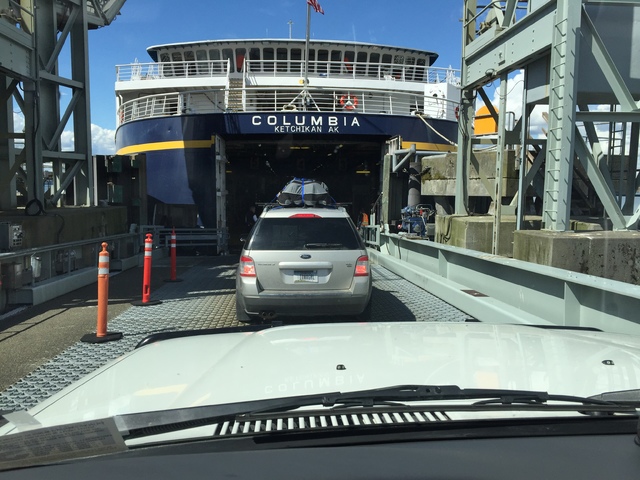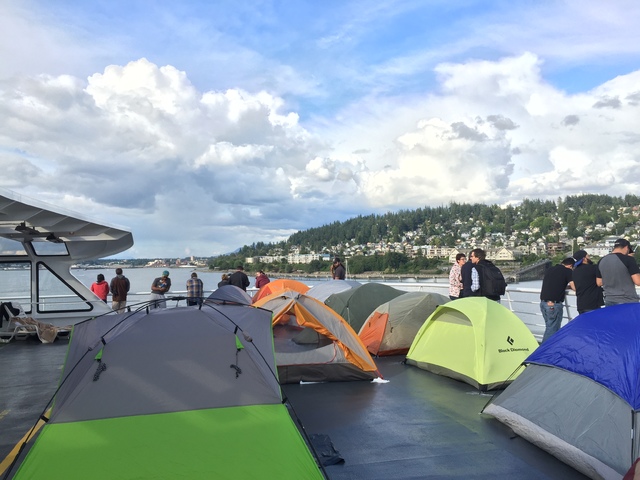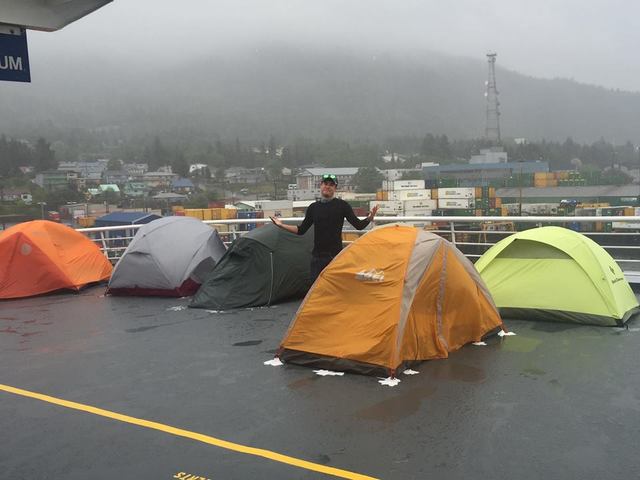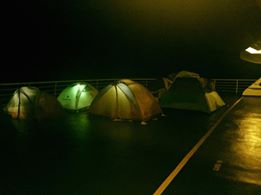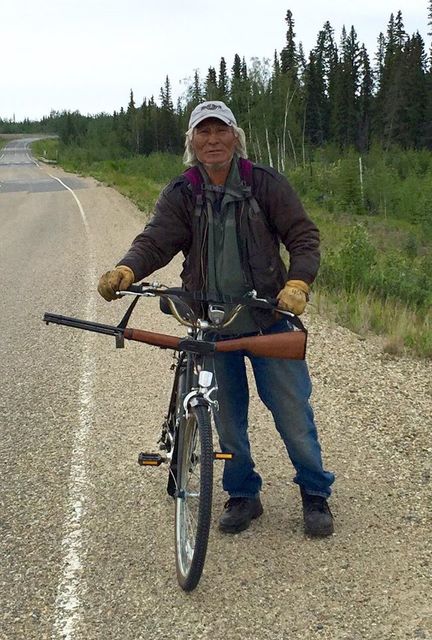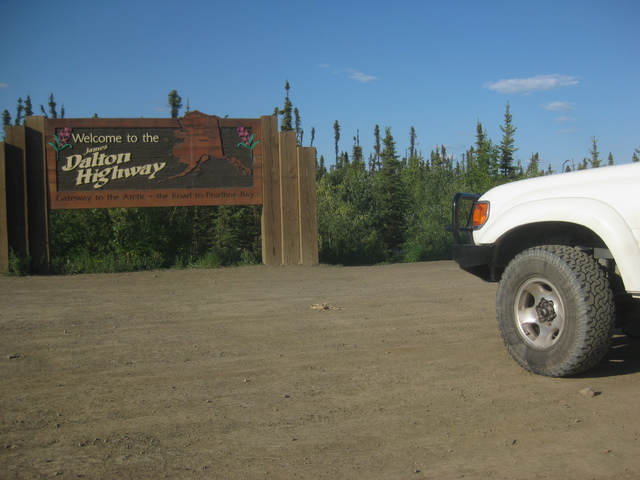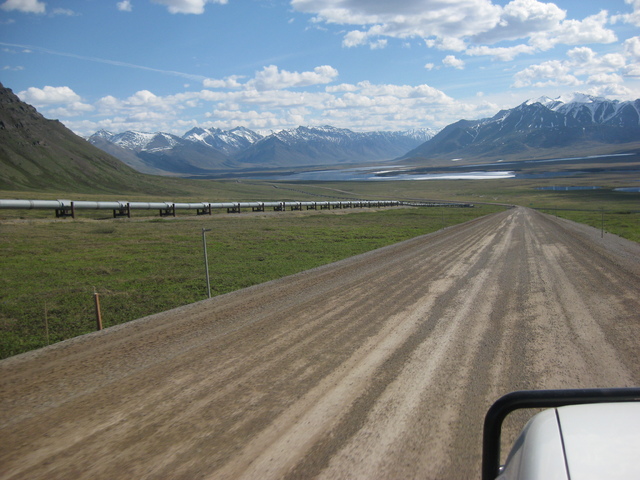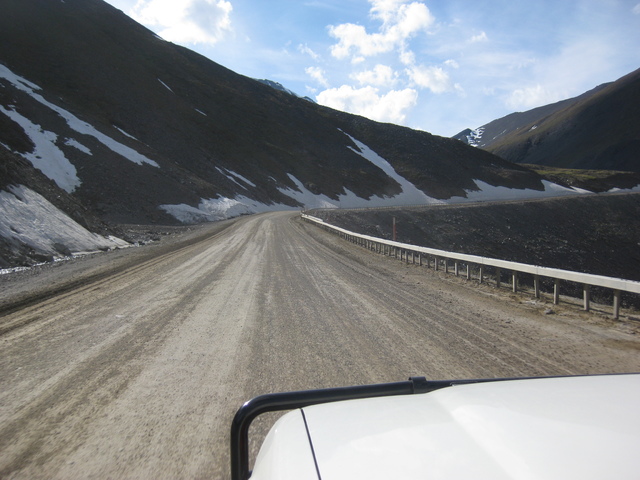Hello all - I recently returned from an 4 week, 8,800 mile trip from Arizona to the Arctic Circle and back. I want to share how my 80 series did, but as I write this I realize I've never done a proper introduction. So here goes:
My name is Scott and I am a 28- year old living in Arizona. I grew up helping my dad with his vehicle restoration projects. My screen name here, dtchevy42, is in reference to the vehicles he specialized in - Diamond-T trucks and Chevrolets from the 40s and 50s. On January 1, 1997, rather than watch ASU in the Rose Bowl, my dad traded in his 1985 60 Series for a brand new 80 series. For a time, I posted on ih8mud on his behalf, hence my relatively low profile number and early join date of 2004.
Fast forward to this May 2016. I was working as a registered Mechanical Engineer in the HVAC/plumbing consulting industry in Tucson, Arizona. Not happy with my current job, I quit in May and decided to hit the road until money runs out. I had owned the 80 Series for a few years and it is my daily driver. I decided it was time to do a proper expedition-style trip.
First, the modifications:
851/860 Medium Front, Medium Rear. Front has 20mm spacers.
Warn 8000 on ARB front bumper.
Seat Heaters : )
CDL switch with Pin-7 mod, no lockers
285/75/R16 BFG KOs
Wits end Console Scout Box and FEM under passengers seat.
Original headgasket.
This is my daily driver setup. Contrary to many, I still keep the 3rd row seats, and I use them!
One week after I left my job of six years, I loaded up the Land Cruiser with camping gear, emergency supplies, and a 4 changes of clothes. I also brought along a suit and dress shoes. Hey, I'm out of a job and it would be irresponsible not to be ready to interview! I also packed a 7-gallon water container, a gas can, some spare hoses, and a few CDs.
A friend and I left Arizona on Friday, June 3rd. Headed west on I-10 towards California. The first mission was to do Highway 1/101 from Huntington Beach north until it ended in Washington. I'll spare you the pics of the beach towns, but the first notable stop was Pismo Beach.

We didn't realize it at the time, but supposedly Pismo is one of the only California beaches you can drive on. For $5, you get an all day pass and a witness to CARNAGE! This is like dune life in Arizona, but with the easy-going attitude of Californians.
Upon entering, we encountered stuck folks. Perhaps we were naive, but we started helping pull people out. This fella was driving his girlfriend's red Cobalt before he got stuck. I like to think we saved his day.


Go ahead, critique my winching technique! After pulling out the F-250, we realized we just can't help everyone. It was time for lunch.

How did the unlocked 80 series do in the sand? Very well! Once I aired down the BFGs to 20 psi, I could go anywhere anyone else could, including the dunes. Later in the trip, we verified on an Oregon scale that we weighed 6,300 lbs with a full tank of gas. Can't complain!
But we weren't done yet. See where we parked? We were on the hard-pack, enjoying our tailgate lunch. Speaking of that, could you imagine an 80 with barn doors? Not nearly as fun. Well, then the Miata Club approached!! As they say in Wisconsin, "ohhhhh crep!". As the Miata Club veered into the sand to go around us, they all got stuck. Our bad for blocking the road! So we added two Miata recoveries to our list for the day.

From Pismo, we headed north. Most of Highway 1 was foggy, but the experience was still worth it. The Land Cruiser plodded along thru the twisties. We continued to the redwoods, and of course had to stop at the drive-thru tree. That's me driving. The 80 Series, at 6'-3" tall, barely cleared the 6'-7" high opening. Glad I didn't buy the roof rack.

We pressed north. Here was a typical camp setup. One of us could sleep in the tent, and one of us in the truck. You can see my window screen in the drivers' window. Thanks to the inspriation from rc51kid, I could totally blackout my truck when needed. one of my best CHEAP mods...curtains/blinds

My name is Scott and I am a 28- year old living in Arizona. I grew up helping my dad with his vehicle restoration projects. My screen name here, dtchevy42, is in reference to the vehicles he specialized in - Diamond-T trucks and Chevrolets from the 40s and 50s. On January 1, 1997, rather than watch ASU in the Rose Bowl, my dad traded in his 1985 60 Series for a brand new 80 series. For a time, I posted on ih8mud on his behalf, hence my relatively low profile number and early join date of 2004.
Fast forward to this May 2016. I was working as a registered Mechanical Engineer in the HVAC/plumbing consulting industry in Tucson, Arizona. Not happy with my current job, I quit in May and decided to hit the road until money runs out. I had owned the 80 Series for a few years and it is my daily driver. I decided it was time to do a proper expedition-style trip.
First, the modifications:
851/860 Medium Front, Medium Rear. Front has 20mm spacers.
Warn 8000 on ARB front bumper.
Seat Heaters : )
CDL switch with Pin-7 mod, no lockers
285/75/R16 BFG KOs
Wits end Console Scout Box and FEM under passengers seat.
Original headgasket.
This is my daily driver setup. Contrary to many, I still keep the 3rd row seats, and I use them!
One week after I left my job of six years, I loaded up the Land Cruiser with camping gear, emergency supplies, and a 4 changes of clothes. I also brought along a suit and dress shoes. Hey, I'm out of a job and it would be irresponsible not to be ready to interview! I also packed a 7-gallon water container, a gas can, some spare hoses, and a few CDs.
A friend and I left Arizona on Friday, June 3rd. Headed west on I-10 towards California. The first mission was to do Highway 1/101 from Huntington Beach north until it ended in Washington. I'll spare you the pics of the beach towns, but the first notable stop was Pismo Beach.

We didn't realize it at the time, but supposedly Pismo is one of the only California beaches you can drive on. For $5, you get an all day pass and a witness to CARNAGE! This is like dune life in Arizona, but with the easy-going attitude of Californians.
Upon entering, we encountered stuck folks. Perhaps we were naive, but we started helping pull people out. This fella was driving his girlfriend's red Cobalt before he got stuck. I like to think we saved his day.
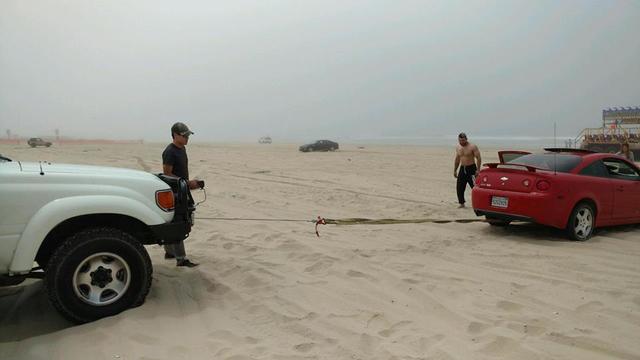
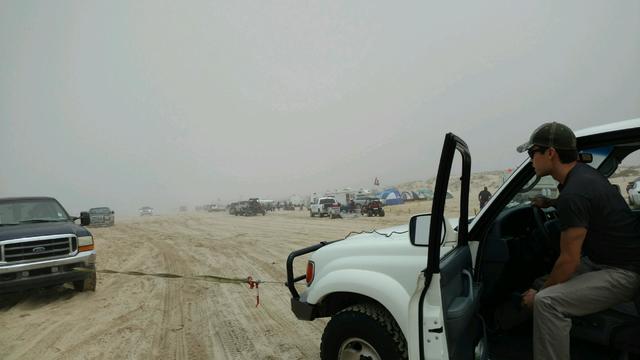
Go ahead, critique my winching technique! After pulling out the F-250, we realized we just can't help everyone. It was time for lunch.
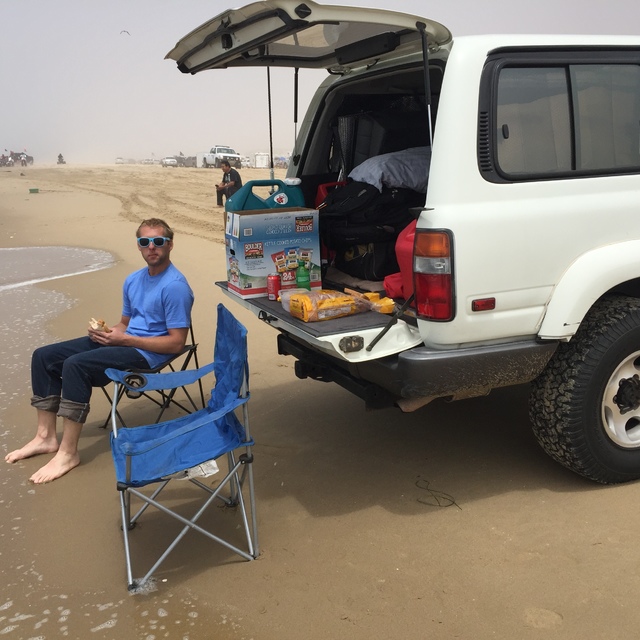
How did the unlocked 80 series do in the sand? Very well! Once I aired down the BFGs to 20 psi, I could go anywhere anyone else could, including the dunes. Later in the trip, we verified on an Oregon scale that we weighed 6,300 lbs with a full tank of gas. Can't complain!
But we weren't done yet. See where we parked? We were on the hard-pack, enjoying our tailgate lunch. Speaking of that, could you imagine an 80 with barn doors? Not nearly as fun. Well, then the Miata Club approached!! As they say in Wisconsin, "ohhhhh crep!". As the Miata Club veered into the sand to go around us, they all got stuck. Our bad for blocking the road! So we added two Miata recoveries to our list for the day.
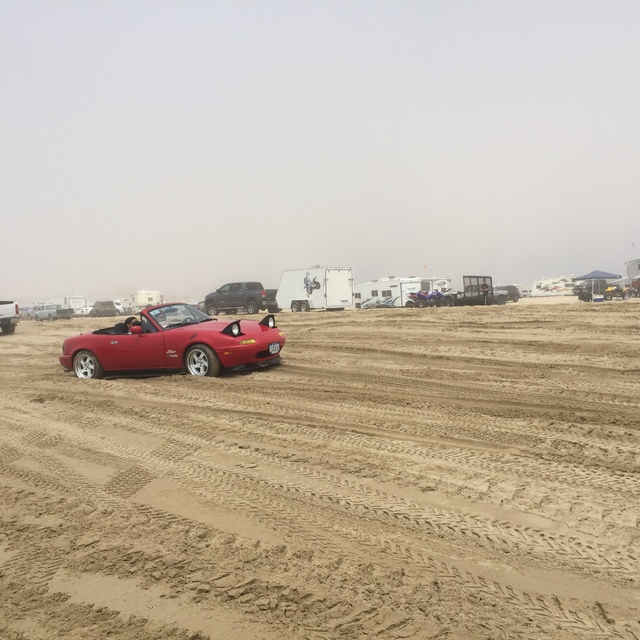
From Pismo, we headed north. Most of Highway 1 was foggy, but the experience was still worth it. The Land Cruiser plodded along thru the twisties. We continued to the redwoods, and of course had to stop at the drive-thru tree. That's me driving. The 80 Series, at 6'-3" tall, barely cleared the 6'-7" high opening. Glad I didn't buy the roof rack.

We pressed north. Here was a typical camp setup. One of us could sleep in the tent, and one of us in the truck. You can see my window screen in the drivers' window. Thanks to the inspriation from rc51kid, I could totally blackout my truck when needed. one of my best CHEAP mods...curtains/blinds
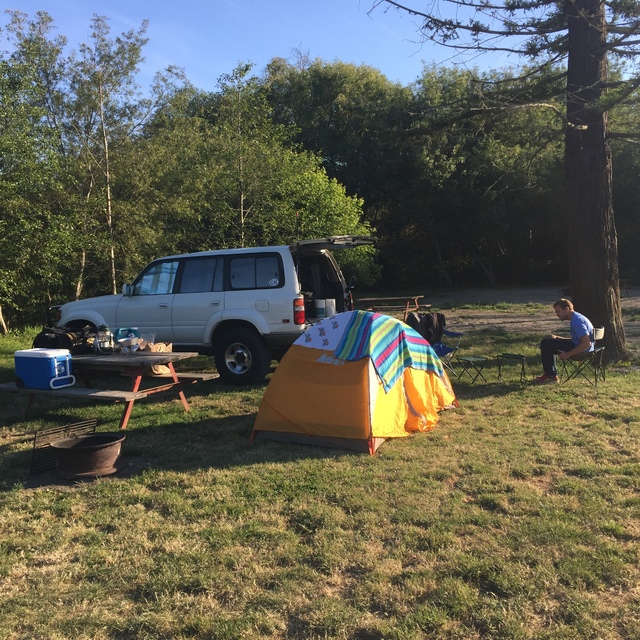
Last edited:

